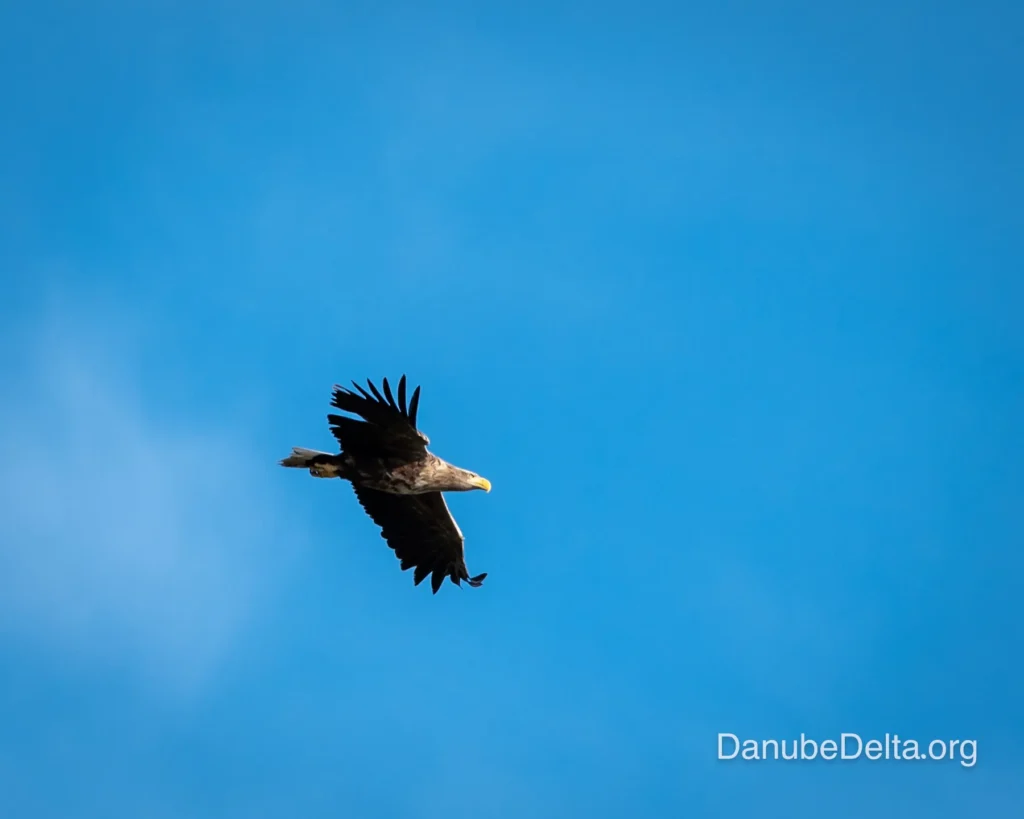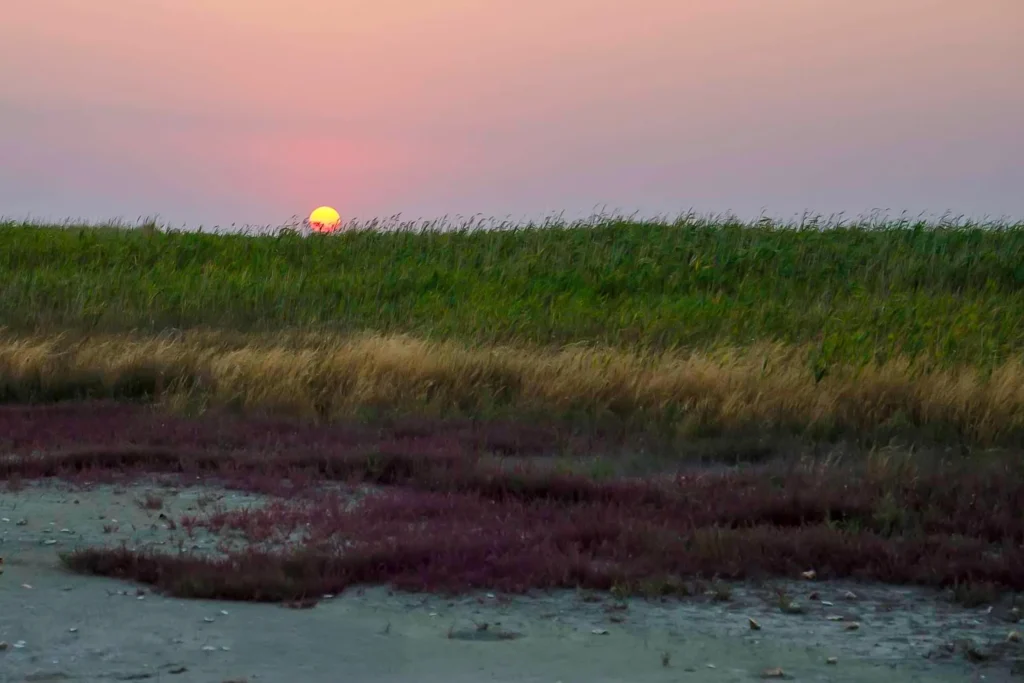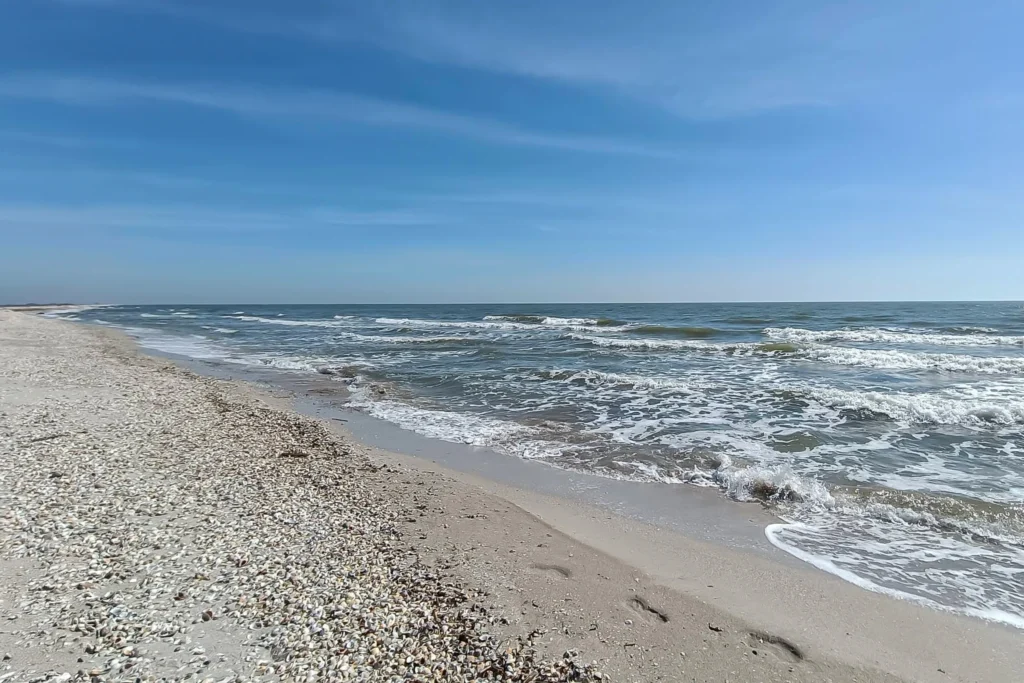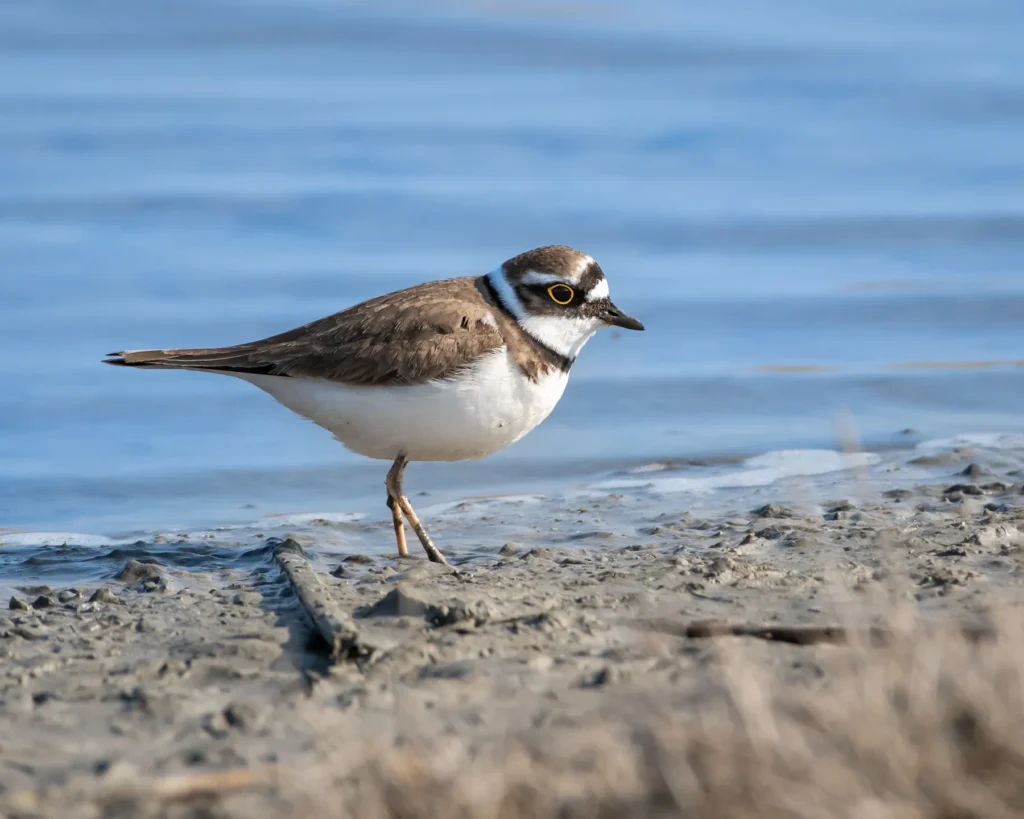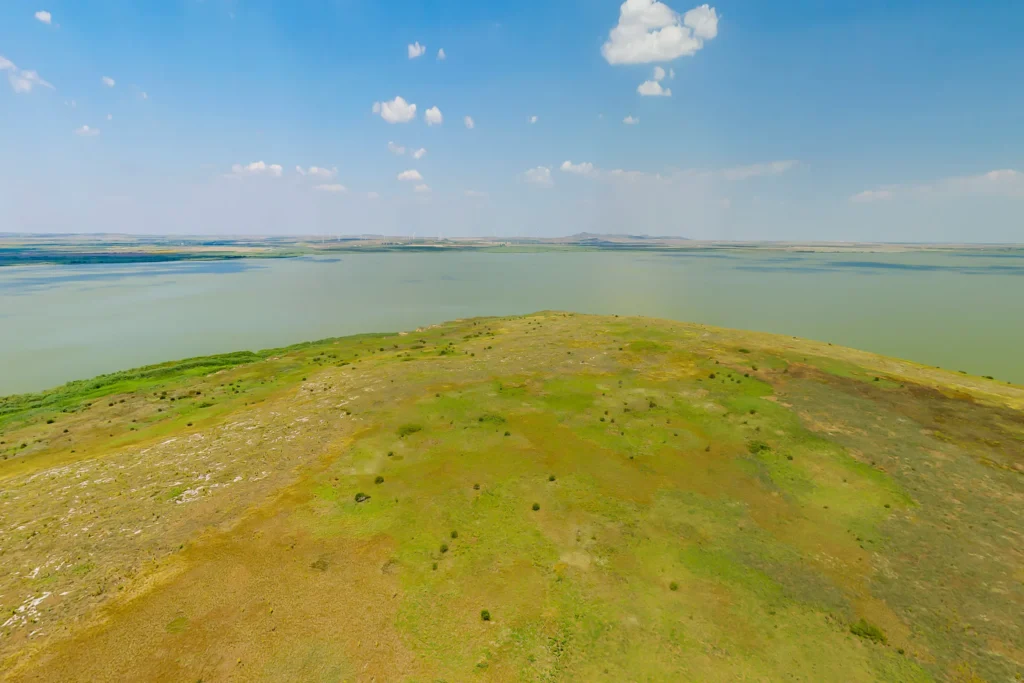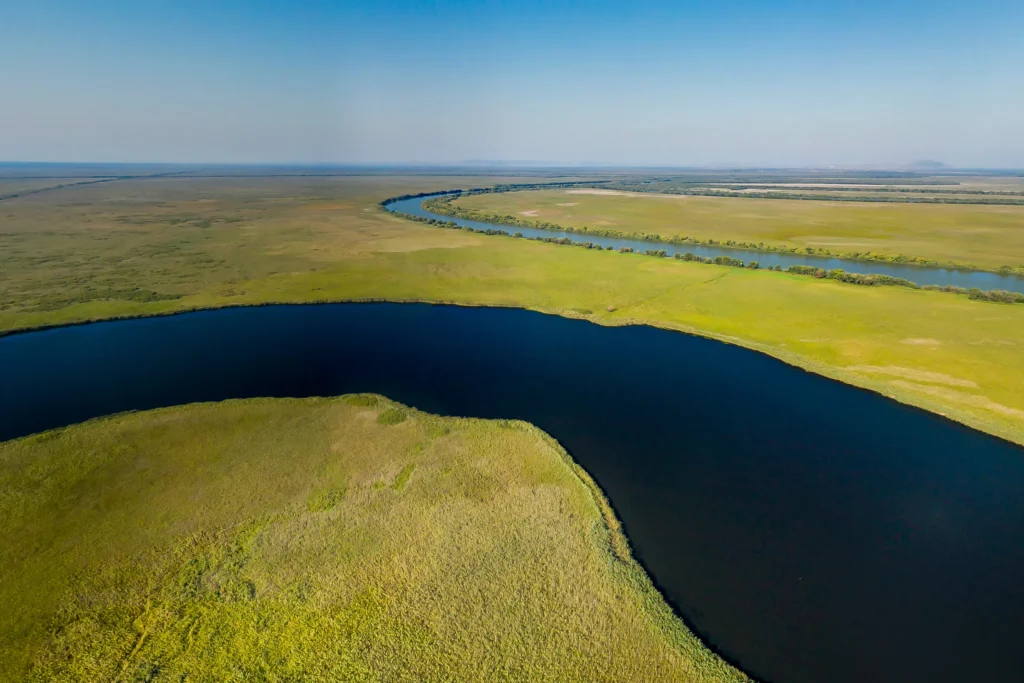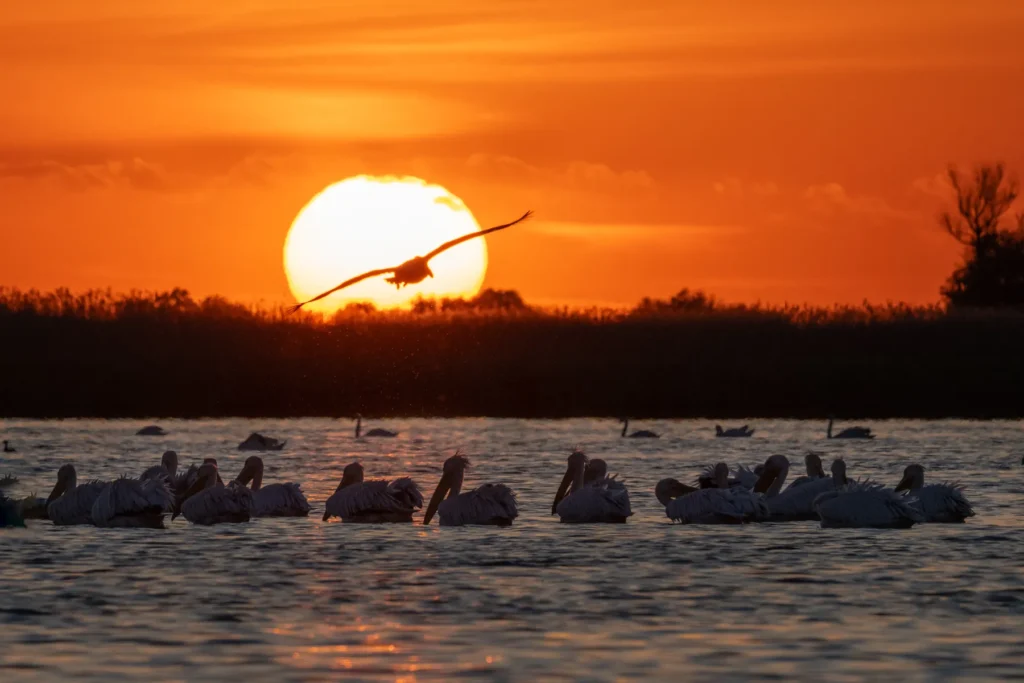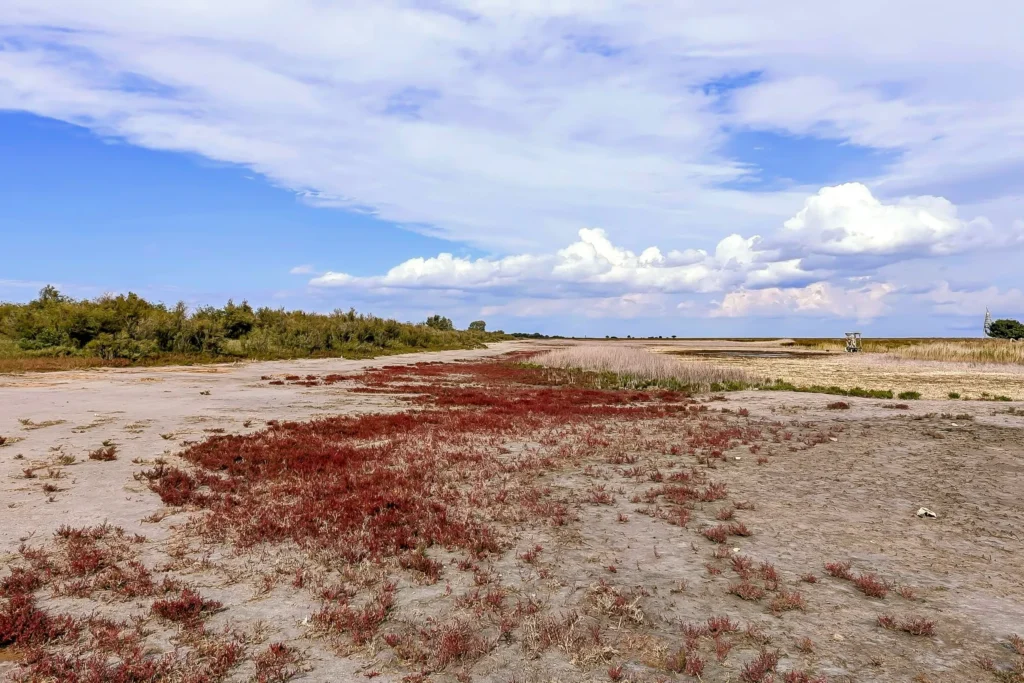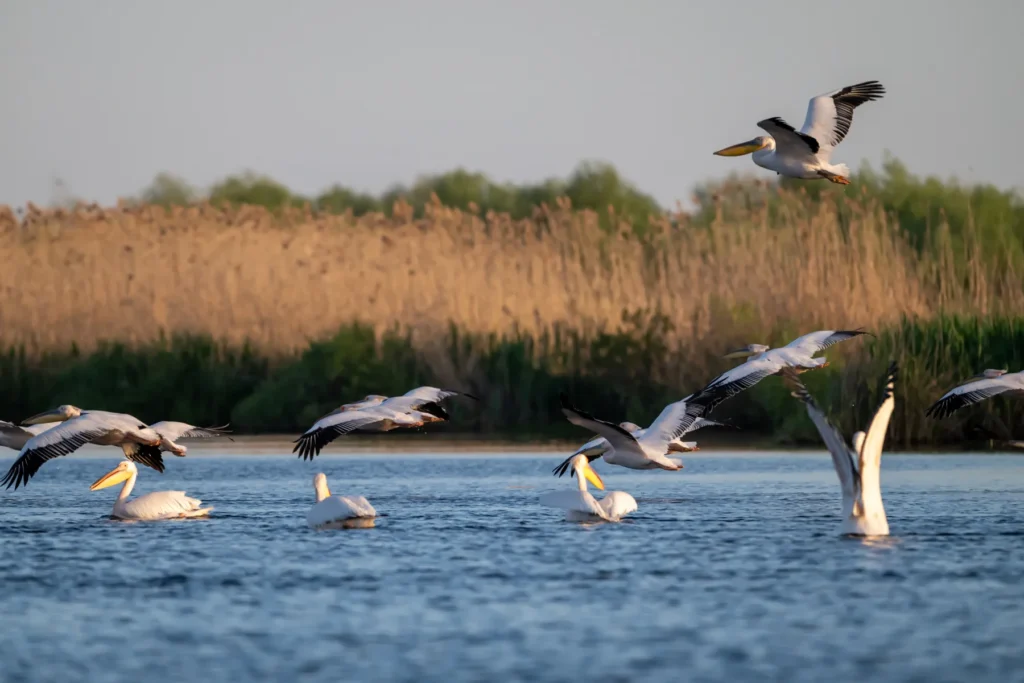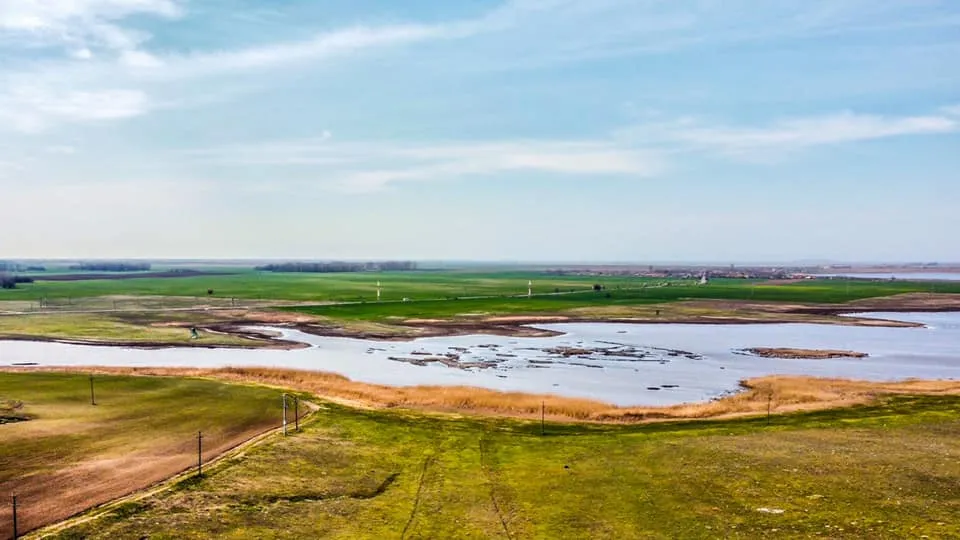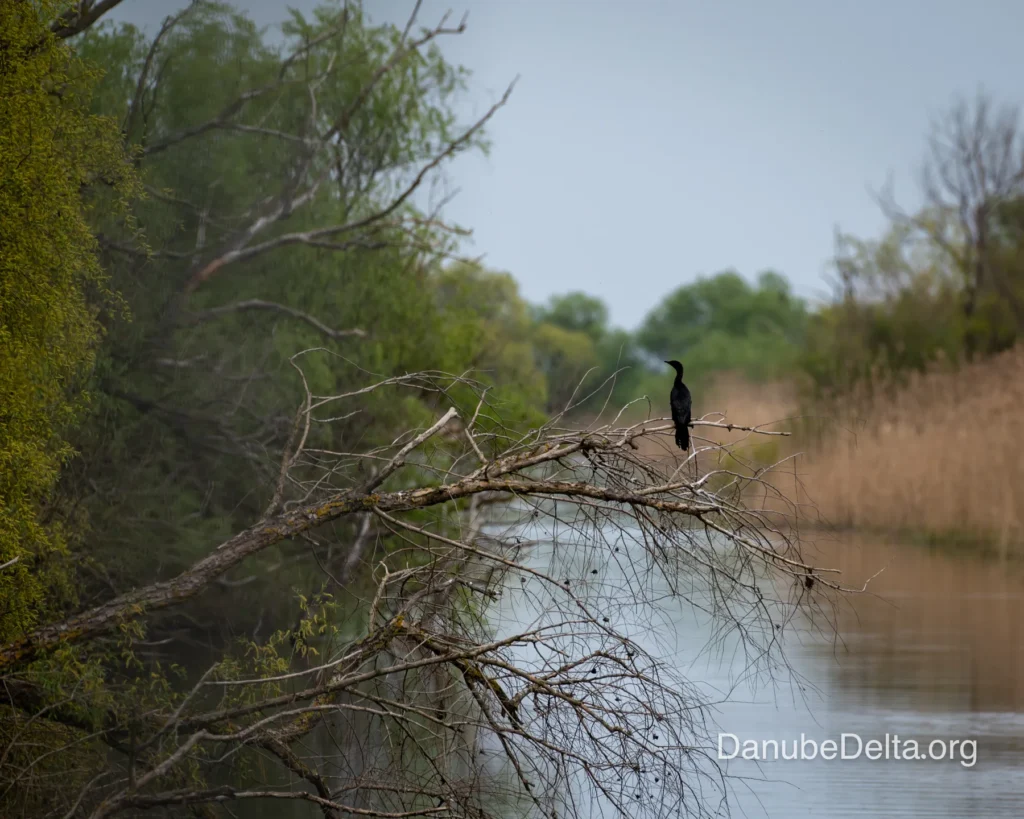Sacalin Zătoane, a strictly protected area in the Danube Delta
Sacalin Zătoane - Danube Delta
Zătoane Sacaline Complex: A Biodiversity Sanctuary in Perpetual Dynamics
A Gateway to the Maritime Wilderness of the Danube Delta
The Sacalin Zătoane Complex is an area of exceptional ecological importance, located within the Danube Delta Biosphere Reserve (DDBR). Internationally recognised, the Danube Delta was included in the UNESCO World Network of Biosphere Reserves in 1990, declared a wetland of international importance (Ramsar site) in 1991, and entered the World Natural Heritage List. This triple recognition underlines its undisputed global value.
In this broad context, the Zătoane Sacalin Complex stands out as the largest strictly protected area in the entire reserve, covering an impressive 21,410 hectares. The area is considered as a natural sanctuary, a representative and minimally disturbed sample of the terrestrial and aquatic ecosystems specific to the delta. Therefore, a detailed analysis of this complex is essential to understand not only its ecological and geographical particularities, but also the complexity of the conservation efforts needed to maintain such a dynamic environment.
Legal and Historical Status of the Reserve
Official and Legal Framework
The Sacalin Zătoane Complex is a protected area of national interest, categorised in category Ia IUCN (Strict Nature Reserve), with a full protection regime. This legal status imposes severe restrictions on all human activities, except those of a scientific nature. The initial declaration as a protected area took place in 1961, and its status was reconfirmed by subsequent legislative acts, including Law No. 5 of 6 March 2000, published in the Official Journal of Romania, and Government Decision No. 248 of 1994, which detailed the delimitation of the functional zones. This succession of normative acts emphasises the continuous recognition of the importance of the area by the Romanian authorities.
The Administration of the Danube Delta Biosphere Reserve (ARBDD), a public institution subordinated to the Ministry of the Environment, is the entity responsible for the management and protection of the natural heritage of the entire reserve. In the case of the Zătoane Sacalin Complex, the role of the ARBDD is crucial, as it involves guarding, controlling and permanently monitoring the territory to ensure strict compliance with the prohibitions and conservation objectives. Of particular importance is the fact that the area has an integral protection regime, where any economic activity is forbidden and access is allowed only with a special authorisation issued by the ARBDD.
The re-confirmation of the legal status of the complex by Law No. 5 of 2000 is a detail of particular importance in view of the rapid environmental dynamics. Sacalin Island and the adjacent complex are in a constant process of geological evolution, subject to the processes of accretion (formation of new earth) and erosion. A legislative update of the protected perimeter, as suggested by the legal reconfirmation, shows the adaptability of the legal framework to changing geomorphological realities. It demonstrates a deep understanding that in such a fluid and dynamic ecosystem, protection cannot be static, but must continually adapt to natural changes in the territory.
Table 1: Legal Framework and Key Data of Sacalin Zătoane Complex
| Feature | Detail |
| Name of protected area | Zătoane Sacalin Complex |
| IUCN categories | Ia (Strict Nature Reserve of avifauna type) |
| Surface | 21 410 ha |
| Year established | 1961 |
| Legal reconfirmation | Law No 5/2000, published in the Official Gazette, No 152 of 12 April 2000 |
| Administrative Location | Sfântu Gheorghe commune, Tulcea county |
Geographical Features and Geological Evolution
Location and Landscape Structure
The Sacalin Zătoane complex is located in the southern part of the Danube Delta, at the confluence of the Sfântu Gheorghe Arm and the Black Sea. Geographically, the area comprises a succession of young, sandy marine sandstones that are almost parallel to the shoreline. These alternate with shallow, isolated or semi-isolated lakes known as Zătoane (Small and Large Zătonul Zătonul). The landscape is the complex result of fluvial alluvial deposits and the action of marine currents, which constantly shape the shoreline and the island's configuration.
Formation and Dynamics of Sacalin Island
Sacalin Island, a defining component of the complex, is often referred to as "the newest land of Romania and Europe". Its geological history is remarkably dynamic. The first documented mention of the island dates back to 1771, when a Russian map recorded it as having a single nucleus. But it was only in 1897 that Sacalin officially surfaced, formed on the edge of a submerged deltaic shelf. Later measurements show continued growth: in 1924, the island was 10km long, reaching 19km by 2015.
Its evolution does not stop here. Nowadays, during certain periods of low water levels, the north-eastern part of the island is alienated from the dry Delta, turning it into a peninsula. This process, together with coastal erosion, represents a continuous struggle between the forces of accretion generated by the Danube alluvium and the abrasive forces of the Black Sea. This geological dynamic has a direct impact on the ecology. On the one hand, the formation of new sandbanks and landforms creates pristine habitats ideal for nesting and resting for various bird species. On the other hand, the isolation of the island from the mainland may alter the hydrological regime and salinity of the adjacent lagoon, potentially influencing the composition of the fauna and flora in the long term. Thus, protecting the complex requires a deep understanding of these large-scale natural processes.
Ecosystem Biodiversity
The Sacalin Zătoane complex is a mosaic of habitats, supporting an impressive biodiversity, from specialised plants to massive colonies of birds and rare species of fish and mammals.
Specific flora
Thanks to the constant interaction with the salty waters of the Black Sea, the island of Sacalin is rich in halophilic plants, adapted to survive in soils with a high mineral salts content. Rare species that inhabit these soils include sea kale (
Crambe maritima) and the marsh canary. These species are indicators of a specific environment, difficult to find elsewhere in the Delta, and demonstrate the extraordinary adaptation of life to the unique conditions at the confluence of the river and the sea.
A Paradigmatic Avifaunistic Paradise
The area is recognised as an ornithologist's paradise and an essential nesting, feeding, resting and migratory site for many bird species. Its importance is reinforced by the presence of emblematic species:
- Pelicans: Home to Romania's largest colony of crested pelicans (Pelecanus crispus - Dalmatian pelican), a rare and globally endangered species. It is also an important stopover point for common pelicans (Pelecanus onocrotalus).
- Other species: It is here that the largest colonies of sea chyr (Thalasseus sandvicensis) in Romania and a number of other waterbird species such as the red-backed night heron (Ardea purpurea), the yellow star (Ardeola ralloides), swan (Cygnus cygnus), the shoveller (Platalea leucorodia) and many wader species (shorebirds).
Around 30 bird species nest in the area, and for over 100 other species, the Sacalin serves as a vital resting and feeding spot during spring and autumn migration.
Mammals, Reptiles and Fish
In addition to birdlife, the waters of the Sacalin Zătoane complex provide a haven for valuable fish, including sturgeon, wrasses and mullet. But the most remarkable aspect is the return, after more than 30 years, of the Black Sea seal as a habitat species on the island, according to representatives of the Danube Delta National Research and Development Institute (INCDDD). This is an extremely strong ecological signal. The presence of a top predator such as the seal indicates a healthy and robust ecosystem capable of supporting a complex food chain. Such species act as a natural barometer of environmental quality, and their presence here attests to the effectiveness of protective measures.
Threats and Vulnerabilities
Despite its protected status, the Zătoane Sacalin Complex faces a number of constant threats, both man-made and natural.
Anthropogenic Pressures
The main anthropogenic threat is unauthorised tourist access, poaching and pollution. Even if access is strictly prohibited, the area is at constant risk of disturbance. Fish poaching, particularly with monofilament nets, is a major problem with a direct impact on valuable fish fauna, including sturgeon. Illegal fishing and entering sensitive areas with motorised boats in springtime are other activities that seriously affect the balance of the ecosystem. Moreover, vegetation burning, a general threat in the Delta, can have devastating consequences on bird colonies and fragile habitats.
Natural Vulnerabilities
In addition to human pressures, the complex is vulnerable to natural processes. Sacalin Island faces coastal erosion, a natural process that can be exacerbated by external factors. Its geological dynamics of accretion and erosion is a delicate balance. Hydrological changes across the whole Danube basin, which can lead to low freshwater input during flood periods, directly affect the ecosystem. A drop in the water table and increased aridity during summers can weaken plant resilience and degrade habitats. This emphasises that, in the case of Sacalin, protection cannot be isolated, but depends on the ecological health of the entire river system.
Conservation and Management Measures
The main conservation strategy of the Zătoane Sacalin Complex is the integral protection regime. It prohibits any economic, tourist or exploitation activity, except for research and monitoring. The ARBDD, together with other institutions such as the Border Police, carries out security and control actions to combat poaching and illegal access. Although the research materials do not detail specific conservation projects for Sacalin Zătoane, they do mention management activities and general strategies for the Natura 2000 sites of which the complex is part. These strategies are usually aimed at monitoring data, mobilising funds for conservation and developing standards for habitat and species protection.
Access and Tourism Regulations
Access inside the Sacalin Zătoane Complex is strictly prohibited for the general public, including tourists. The ban is regulated by Decision No 248/1994, which allows activities to be carried out only with an authorisation from the ARBDD, limited to scientific research, monitoring and control. Tourists can still admire the beauty of the area from the water, from a distance, without landing on the island. This approach allows respectful visitation that does not disturb bird colonies or damage fragile habitats. Failure to respect these rules carries severe penalties, with fines ranging from 3,000 to 6,000 lei for individuals and from 25,000 to 50,000 lei for legal entities.
Conclusions and Recommendations
The Sacalin Zătoane complex is a dynamic and fragile ecosystem, a "natural laboratory" where geological and biological processes unfold under the watchful eye of researchers. Its status as a strictly protected area is fully justified by its exceptional ecological value, serving as a refuge for a rare biodiversity essential for the ecological balance of the Danube Delta and the Black Sea.
The need to conserve this area is imperative, and the management strategy must adapt to ongoing changes, whether geological or anthropogenic. An effective conservation approach must combine strict control measures and constant monitoring with a public education campaign. The latter should promote responsible tourism and remote-visiting, transforming the ban on access into a sign of respect for nature. Instead of being perceived as a barrier, the ban can become a symbol of Romania's commitment to protecting its most valuable natural heritage.
Events in the Danube Delta
Accommodation to suit all tastes:
Whether you prefer the cosiness of modern villas, the rustic atmosphere of traditional guesthouses or the adventure of camping, they offer a variety of accommodation options to suit your needs and budget.
